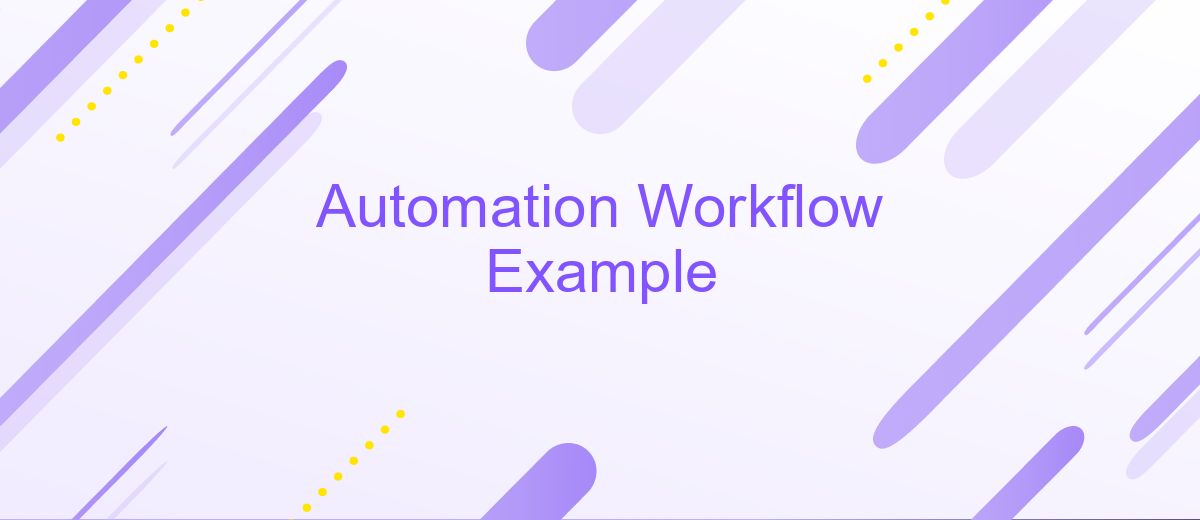Automation Workflow Example
In today's fast-paced digital world, businesses are increasingly turning to automation to streamline their workflows and improve efficiency. This article explores a practical example of an automation workflow, demonstrating how integrating various tools and technologies can optimize processes, reduce manual effort, and enhance productivity. Discover how automation can transform your operations and drive success in an ever-evolving marketplace.
Introduction
Automation workflows have become an essential component in modern businesses, enhancing efficiency and reducing manual errors. By automating repetitive tasks, organizations can focus on strategic activities that drive growth and innovation. This article explores a practical example of an automation workflow, illustrating the steps and tools involved in creating a seamless process.
- Identify repetitive tasks that can be automated.
- Select appropriate tools and platforms for automation.
- Design the workflow with clear steps and conditions.
- Test the workflow to ensure it operates as intended.
- Monitor and optimize the workflow for continuous improvement.
One of the key tools for setting up integrations in automation workflows is ApiX-Drive. This service allows users to connect various applications and automate data transfers without requiring programming skills. By leveraging ApiX-Drive, businesses can streamline their processes, ensuring that data flows seamlessly between different systems, thus saving time and reducing the risk of errors.
Benefits of Automation

Automation significantly enhances efficiency by reducing the time and effort required for repetitive tasks. By implementing automated workflows, businesses can streamline processes, minimize human errors, and ensure consistency across various operations. This leads to increased productivity as employees can focus on more strategic and creative tasks rather than mundane activities. Additionally, automation provides real-time data and analytics, enabling better decision-making and more agile responses to market changes.
Another key benefit of automation is the seamless integration of various tools and platforms. Services like ApiX-Drive facilitate easy connections between different applications, allowing for smooth data transfer and synchronization. This not only saves time but also ensures that all systems are up-to-date and working harmoniously. Moreover, automation can lead to cost savings by reducing the need for manual labor and decreasing operational expenses. Overall, automation empowers businesses to operate more efficiently, responsively, and cost-effectively.
Workflow Diagram

An automation workflow diagram is a visual representation of the steps involved in automating a process. It provides a clear overview of the sequence of actions, decision points, and integrations required to complete the workflow efficiently. The diagram helps in identifying potential bottlenecks and areas for optimization.
- Identify the process to be automated and define the objectives.
- Map out the individual steps involved in the process.
- Determine the decision points where different actions might be taken based on specific conditions.
- Integrate necessary tools and services, such as ApiX-Drive, to facilitate seamless data transfer between applications.
- Test the workflow to ensure it operates as expected and make adjustments as needed.
- Monitor the workflow regularly to identify any issues and optimize performance.
Using a service like ApiX-Drive can significantly streamline the integration process by automating data exchange between various applications. This not only saves time but also reduces the risk of errors, ensuring a more reliable and efficient workflow. Regular monitoring and optimization are essential to maintain the effectiveness of the automated process.
Step-by-Step Guide

Automation workflows can significantly enhance productivity and efficiency in any business process. To create an effective automation workflow, follow these steps carefully. This guide will walk you through the process from beginning to end.
First, identify the tasks you want to automate. These can be repetitive tasks that consume a lot of time and resources. Once you've identified these tasks, outline the steps involved in each task and determine the sequence in which they should be automated.
- Identify and list the tasks for automation.
- Outline the steps and sequence for each task.
- Select the right automation tool, such as ApiX-Drive.
- Set up the integration and configure the workflow.
- Test the workflow to ensure it operates correctly.
- Monitor and optimize the workflow as needed.
Using a tool like ApiX-Drive can simplify the process of setting up integrations between various services. It allows you to connect different applications without needing extensive coding knowledge. Once your workflow is set up, regularly monitor its performance and make adjustments to improve efficiency and effectiveness.
Conclusion
In conclusion, implementing an automation workflow can significantly enhance efficiency and productivity within an organization. By automating repetitive tasks, businesses can allocate resources more effectively and focus on strategic initiatives. The integration of various tools and services, such as ApiX-Drive, simplifies the process of connecting different applications, ensuring seamless data transfer and communication.
Moreover, a well-structured automation workflow minimizes the risk of human error, leading to more accurate and reliable outcomes. As technology continues to evolve, the adoption of automation workflows will become increasingly essential for maintaining a competitive edge. By leveraging platforms like ApiX-Drive, organizations can streamline their operations, reduce manual labor, and ultimately achieve greater success in their respective industries.
FAQ
What is an automation workflow?
How can I create an automation workflow?
What kinds of tasks can be automated in a workflow?
How do I integrate different applications into my automation workflow?
What are the benefits of using an automation workflow?
Routine tasks take a lot of time from employees? Do they burn out, do not have enough working day for the main duties and important things? Do you understand that the only way out of this situation in modern realities is automation? Try Apix-Drive for free and make sure that the online connector in 5 minutes of setting up integration will remove a significant part of the routine from your life and free up time for you and your employees.

